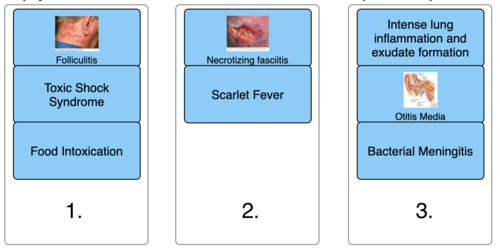Which bacteria causes infections seen in chart 3?
A) Streptococcus pyogenes
B) Staphylococcus aureus
C) Streptococcus pneumoniae
C) Streptococcus pneumoniae

You might also like to view...
Secondary immune responses upon a second exposure to a pathogen are due to the activation of _____
A) memory cells B) macrophages C) stem cells D) B cells E) T cells
Translation requires _____
A) mRNA, tRNA, DNA, and rRNA B) mRNA, DNA, and rRNA C) mRNA, tRNA, and rRNA D) mRNA, tRNA, and DNA
Many birth-control pills give a constant amount of synthetic estradiols and progesterone for 21 days, and followed by seven days where no hormones are ingested. These constant hormone levels affect the menstrual cycle in different ways
Which of the following statements most accurately describes the effects of birth control pills? A. Birth control pills inhibit the formation of uterine lining so implantation of a fertilized oocyte cannot occur. B. Birth control pills maintain constant levels of certain hormones so there is no surge in FSH and ovulation does not occur. C. The seven days with no hormones does not allow a thick enough uterine lining to form so a fertilized oocyte cannot implant. D. Birth control pills maintain constant levels of certain hormones and mask the release of the oocyte from the follicle.
Which of the following occurs during systolic pressure?
a. The ventricles contract. b. The atria contract. c. Both the ventricles and atria contract. d. The heart is at rest.